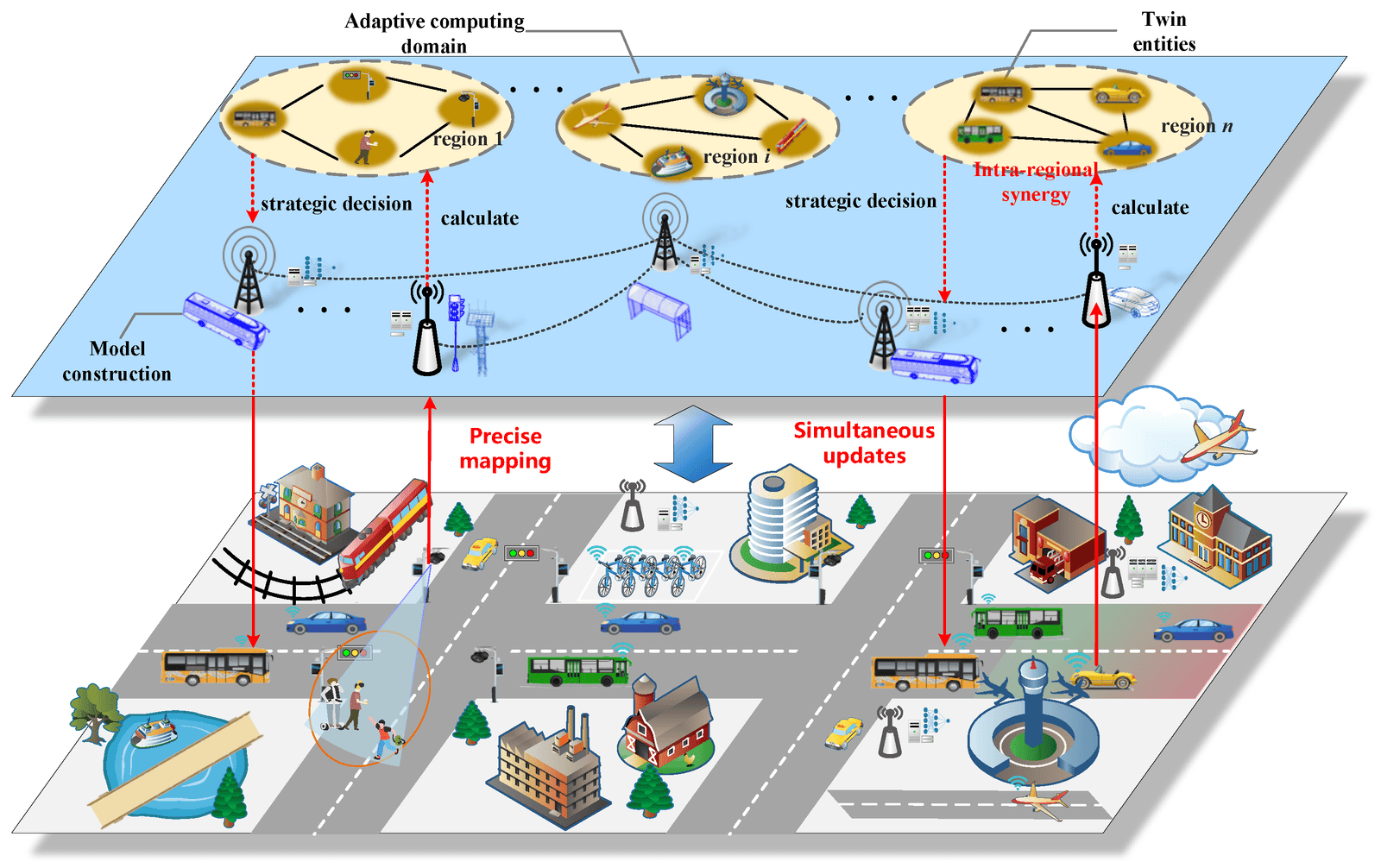degradation models digital twin example technology are a powerful tool to predict the wear and tear of physical entities in real-time. When we talk about a “degradation models digital twin example,” we are referring to how virtual models of physical assets can help us understand and monitor their degradation over time. These models allow us to detect early signs of failure, plan for maintenance, and improve overall performance.
For example, imagine a digital twin used for monitoring the condition of a wind turbine. By using degradation models, the digital twin can simulate how the turbine’s parts will degrade over time due to factors like weather, usage, and stress. This helps engineers know when to replace parts or perform maintenance, reducing unexpected breakdowns and extending the lifespan of the equipment. In this blog, we’ll dive deeper into how degradation models work in digital twins, and explore real-world examples.
What Are Degradation Models in Digital Twin Technology?
dedegradation models digital twin example exam technology help us understand how physical things wear down over time. They work by using digital versions (called twins) of physical objects. These digital twins can change in real time based on how the real object is changing. The “degradation models” part means the digital twin can predict when something will break or wear out, based on how it’s being used.
For example, in a factory, machines are constantly working, and their parts start to wear out. A degradation model digital twin example would predict when a part might fail. Instead of waiting for a machine to break, the model helps workers know when to fix it before it stops working. This helps save time and money because the problem is fixed before it becomes serious.
A degradation model works by collecting data from sensors, like temperature or pressure, and using that to track how a machine is wearing out. Over time, the digital twin gets smarter and can predict what will happen next. This way, we can avoid surprise failures and keep everything running smoothly.
How Degradation Models Improve the Life of Physical Assets: Digital Twin Example
Degradation models help extend the life of physical objects by predicting when they need maintenance. For example, think about a bridge in a city. Over time, the materials used to build it—like steel and concrete—begin to degrade. By using a digital twin and degradation models, we can predict when the bridge might need repairs to avoid serious problems.
A good example of how this works is in the automotive industry. Car manufacturers use digital twins to track how different parts of the car degrade, like the tires or engine components. The digital twin can predict when these parts will need maintenance or replacement, which helps car owners save money on repairs.
Using degradation models digital twin example also allows industries to perform maintenance only when needed. This is called predictive maintenance. Rather than doing regular maintenance at fixed intervals, companies can use digital twins to do maintenance only when the model says it’s time. This helps save money and avoid unnecessary repairs.
Why Degradation Models Are Crucial for Predictive Maintenance in Digital Twin Systems
Predictive maintenance is a big reason why degradation models are so important in digital twin systems. When we know how a machine or structure is degrading over time, we can predict when it will need fixing. This helps businesses avoid unplanned downtime, which can be very costly. By using degradation models in digital twins, companies can stay ahead of problems and keep operations running smoothly.
For example, in the energy sector, wind turbines are exposed to harsh weather conditions. A digital twin with a degradation model can predict when the turbine blades will start to degrade due to wind, rain, or sun. This allows the company to replace or repair the blades before they fail completely.
Benefits of predictive maintenance with degradation models:
- Avoids unexpected breakdowns.
- Reduces downtime and keeps operations running.
- Helps save money by only doing repairs when needed.
- Extends the lifespan of assets.
These benefits make degradation models a valuable tool for improving the efficiency and reliability of systems.
Real-World Applications: Degradation Models in Digital Twin Example for Manufacturing
Manufacturing is one industry that benefits a lot from using degradation models in digital twins. Machines in factories work continuously, which means they are always wearing out. By using a digital twin that tracks the wear and tear of each machine, manufacturers can predict when a machine is about to break down.
For example, consider a factory that produces cars. The digital twin of a machine used for assembling parts can predict when the machine will need maintenance. The system tracks the parts and uses data to understand how they are wearing out. When the model predicts a problem, workers can perform maintenance before the machine breaks down.
The use of degradation models in manufacturing helps avoid costly repairs and downtime. The factory can stay productive and reduce unnecessary maintenance costs. This also helps companies increase profits by keeping machines working longer.
Challenges in Developing Degradation Models for Digital Twin Systems
While degradation models are useful, creating them isn’t always easy. One challenge is gathering accurate data from the physical entity. Sensors must be placed in the right locations to get the best readings of how things are wearing out. This data needs to be collected consistently and analyzed to be helpful.
Another challenge is ensuring the digital twin is always up to date with real-time data. The digital twin and the physical entity need to be connected so that changes in the real world are reflected in the virtual model. If there’s a delay or data loss, the model might not be accurate, which can lead to mistakes in predictions.
Common challenges in developing degradation models:
- Gathering accurate and continuous data.
- Ensuring the digital twin stays in sync with the real entity.
- Maintaining sensors and technology to collect data properly.
Despite these challenges, improvements in sensor technology and data analysis are helping make degradation models more reliable.
The Future of Degradation Models in Digital Twin Technology: Trends and Innovations
As technology advances, the future of degradation models in digital twin technology looks bright. New trends in AI and machine learning are helping improve the accuracy of degradation predictions. By using these technologies, digital twins can learn from past data and get better at predicting when problems will occur.
In addition, the use of more advanced sensors and the Internet of Things (IoT) is allowing for even more detailed data collection. This means that digital twins can get more information and create more accurate degradation models, which will lead to better predictions and fewer failures.
Emerging trends in digital twin degradation models:
- Integration with AI for smarter predictions.
- More accurate sensors for better data collection.
- The rise of IoT for connected and smarter systems.
These trends will help industries use digital twins and degradation models to their full potential, improving efficiency and reducing costs.
Digital Twin Example: How Degradation Models Help Predict Equipment Failure
One of the key benefits of using degradation models in digital twin systems is predicting when equipment will fail. For example, in an airport, the digital twin of an airplane engine can track how the parts are degrading over time. The model helps predict when certain parts will need replacing to avoid a failure during flight.
By using this system, the airline can schedule repairs ahead of time, reducing the risk of unplanned delays or accidents. This keeps the planes running safely and efficiently, and saves money on emergency repairs.
How digital twins predict equipment failure:
- Track the wear and tear of individual parts.
- Use sensors to gather real-time data.
- Predict the future condition of equipment.
Using degradation models in this way helps industries like aviation avoid dangerous and costly failures.
Conclusion
degradation models digital twin example technology are powerful tools that help industries predict when things will wear out or break down. These models use real-time data from sensors to track the condition of physical objects, making it easier to know when repairs or maintenance are needed. By using digital twins, businesses can prevent costly downtime and keep their equipment running longer. This helps save money and increases efficiency in many industries, from manufacturing to transportation.
As technology continues to improve, the future of degradation models in digital twin systems looks even brighter. With advancements in AI, machine learning, and sensor technology, these models will become even more accurate and useful. Industries will be able to predict failures with even greater precision, allowing for smoother operations and better maintenance planning. The continued development of digital twins promises to make our world more connected and efficient, offering endless possibilities for businesses and everyday life.






